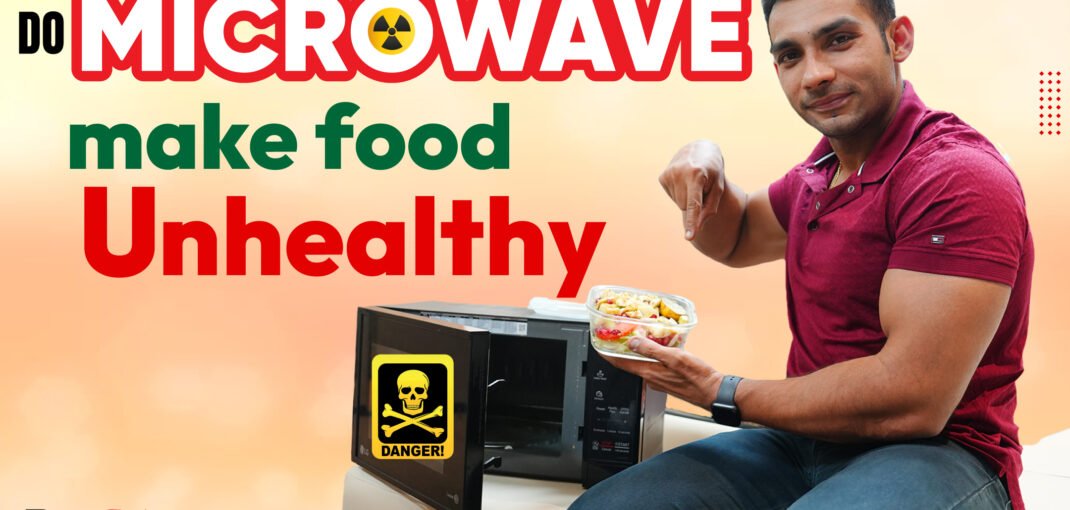Microwaves have grown to be a common appliance in kitchens around the world. They are fast, convenient, and easy to use, making them an attractive option for heating food or even cooking simple meals. However, a common concern that often arises is whether microwaving food leads to a loss of nutrients. In this blog, we’ll explore how microwaves work, whether they affect the nutritional value of food, and how you can use your microwave to prepare meals without worrying too much about nutrient loss.
How Do Microwaves Work?
To understand the effect of microwaving on food, it’s important to know how microwaves work. The EM waves cause the water molecules inside the food to vibrate, creating heat.
Unlike traditional ovens, which rely on external heat, microwaves heat food from within. The waves penetrate the food and cause rapid heating, which can help retain some of the natural moisture in the food. But does this quick and direct heating lead to a reduction in the nutrients present in the food?
Do Microwaves Destroy Nutrients?
The short answer is no; microwaves do not specifically destroy nutrients any more than other cooking methods do. All cooking methods—whether it’s boiling, steaming, frying, or baking—lead to some nutrient loss. This is because microwaves use less heat and cooking time, which can minimize nutrient loss. For example, boiling vegetables often results in the loss of water-soluble vitamins (like vitamin C and certain B vitamins) because these nutrients leach into the water. Since microwaving requires less water, it may help preserve more of these vitamins.
What Types of Nutrients Are Affected?
When discussing nutrient loss, it’s essential to understand which nutrients are more likely to be affected by cooking in general. There are two main types of nutrients to consider: water-soluble vitamins and fat-soluble vitamins.
Water-Soluble Vitamins
Water-soluble vitamins include vitamins C and B. These vitamins tend to be more sensitive to heat and water. Cooking methods that involve a lot of water, like boiling, tend to wash these vitamins away. Microwaving, on the other hand, uses very little water, which helps retain more of these vitamins.
Fat-Soluble Vitamins
Vitamins A, D, E, and K. These vitamins are more stable when heat exposure and less likely to degrade during cooking. Whether you microwave, bake, or fry food, fat-soluble vitamins remain mostly intact.
Comparing Microwaving to Other Cooking Methods
When comparing microwaving to other cooking methods, it’s clear that microwave cooking is not necessarily worse when it comes to nutrient retention. Some studies suggest that microwaving vegetables can preserve more nutrients than boiling or frying. Here’s a look at how microwaving stacks up against other methods:
Microwaving vs. Boiling
The vitamins dissolve in the cooking water and are discarded when you drain the food. Microwaving, on the other hand, uses very little or no water, meaning more of the nutrients stay in the food.
Microwaving vs. Steaming
Steaming is considered one of the healthiest ways to cook vegetables because it uses minimal water and heat. Microwaving can offer similar benefits because of its short cooking time and limited water use. Both methods are effective at preserving nutrients, although steaming is slightly better in some cases.
Microwaving vs. Frying
Frying food, especially at high temperatures, can lead to a loss of heat-sensitive nutrients like vitamin C. It can also add extra fat and calories to the food. Microwaving, by comparison, uses no oil and typically retains more nutrients since the cooking time is shorter.
How to Maximize Nutrient Retention When Microwaving
If you want to make the most of your microwave while preserving nutrients, there are a few simple tips you can follow:
Use Little to No Water
Since water-soluble vitamins dissolve in water, using less water helps retain more of these nutrients. When microwaving vegetables, you can add just a tablespoon of water or no water at all, as the natural moisture in the vegetables will help them cook.
Don’t Overcook
Regardless of the cooking method, overcooking food can lead to a loss of nutrients. When using a microwave, it’s essential to avoid overcooking by setting the cooking time appropriately and checking the food frequently.
Cover Your Food
Covering your food with a microwave-safe lid or plastic wrap can help create a steaming effect, which locks in moisture and nutrients.
Cut Food into Smaller Pieces
Cutting food into smaller, evenly sized pieces allows it to cook more quickly and evenly in the microwave. This helps minimize the overall cooking time, which can reduce the loss of heat-sensitive nutrients.
Common Myths About Microwaves and Nutrition
There are many myths and misconceptions about microwaving and nutrition.
Myth 1: Microwaving Destroys All Nutrients
As we’ve discussed, microwaving does not destroy all nutrients. It can help retain more nutrients compared to methods like boiling or frying.
Myth 2: Microwaving Changes the Structure of Food
Some people believe that microwaving changes the molecular structure of food in a harmful way. This is not true. The heat generated by microwaves is no different from the heat generated by other cooking methods.
Myth 3: Microwaves Make Food Radioactive
Microwaves do not make food radioactive. The waves used in a microwave oven are a type of non-ionizing radiation, which means they do not have the energy to change the molecular structure of food or make it radioactive.
Conclusion
So, do microwaves lower nutrients in food? The answer is that microwaving is not worse than other cooking methods when it comes to nutrient loss. It can help retain more nutrients, especially when compared to boiling or frying. As long as you use the microwave properly—using little water, avoiding overcooking, and covering your food—there’s no need to worry about significant nutrient loss. Microwaves offer a quick and convenient way to prepare meals while still maintaining much of the nutritional value of your food.






